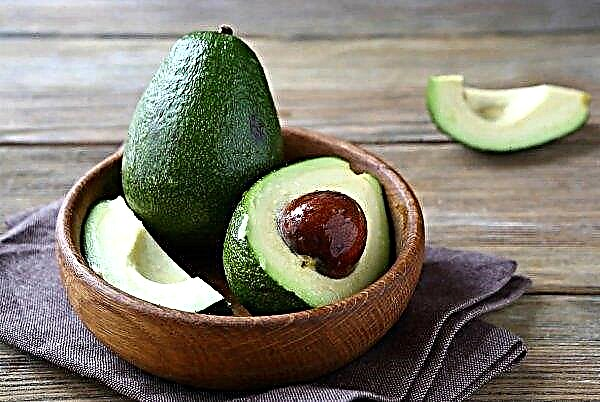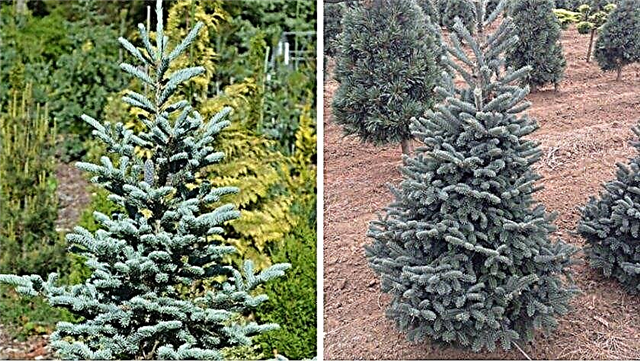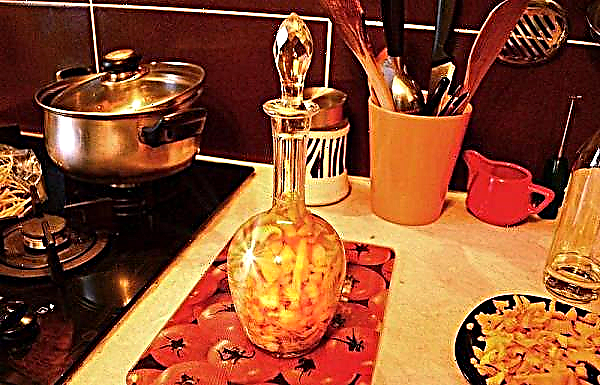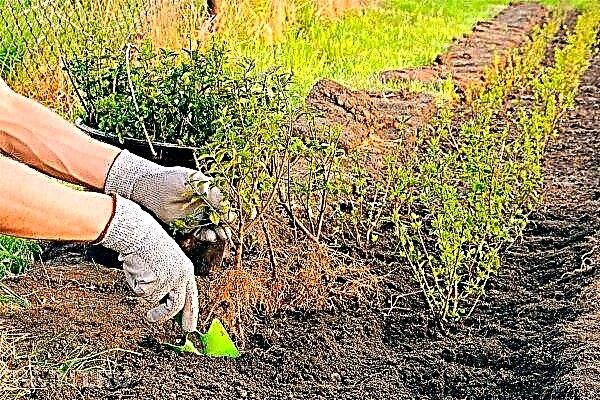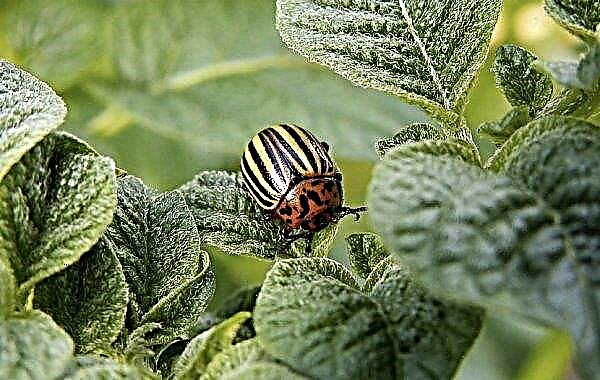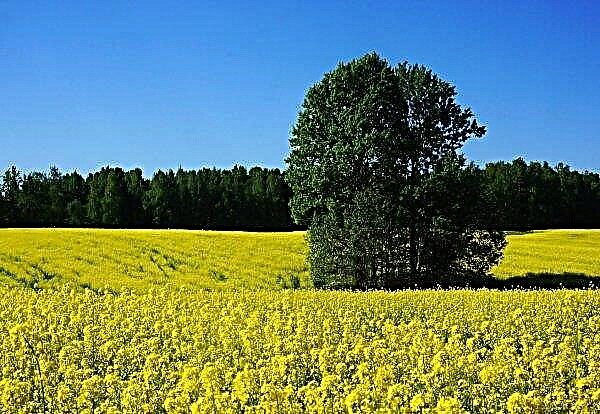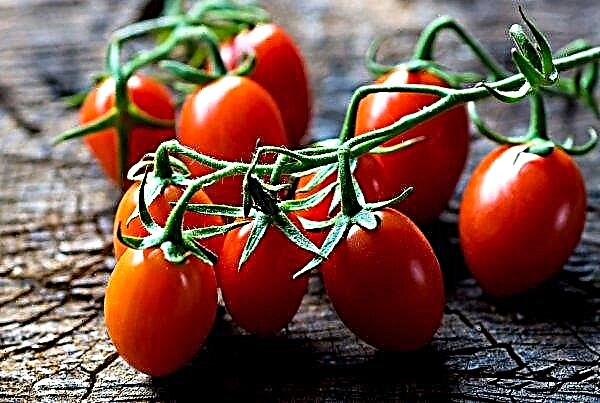The genus of cacti Echinopsis is popular and widespread, includes more than a hundred species, but most are hybrids or varieties. We will tell you what types of echinopsis are most prevalent, how to care for them, what conditions to create and how to propagate.
Botanical description of the plant
Young representatives of the genus Echinopsis have the shape of a ball of green tones, but over time it stretches out. The ribs on the stem are located symmetrically, and the areoles with spines are equidistant from each other. Spines depending on the variety come in different lengths and stiffnesses. Each areola has 15 spines. Powerful roots are located closer to the surface and grow almost horizontally.
Did you know? Echinopsis in translation from Latin means "like a hedgehog." The name of the cactus was given in 1737 by K. Linney, a famous Swedish naturalist who classified plants and animals.
Buds appear on the side of the areoles located in the middle of the plant. The flowers are large, a long flower tube is pubescent, and the color is within the limits of white, pink, red and purple tones, but yellow specimens are also found. Some echinopsis flowers reach 30 cm in length and 15 cm in diameter. Flowering is short, no more than three days. An older and larger plant gives more flowers - up to 25 simultaneously flowering. Their petals form a funnel shape. Flowering lasts from spring to autumn. There are species exuding a pleasant aroma.
| Root system | Powerful, surface |
| Stem | Thick |
| Leaf shape | Spines |
| Flower shape | Funnel |
| Flower color | White, pink, purple |
| Fruit shape | Ovoid |
Main types
Often in the homes of lovers of this cactus hybrids grow. We list the types of echinopsis that have become their basis, and grown indoors:
- Airyes. It has a spherical stem of green color with 11–18 ribs with a diameter of about 15 cm. The height of an adult plant is 20–22 cm. It has many shoots, blooms with white-pink flowers, and has spines up to 2 cm.
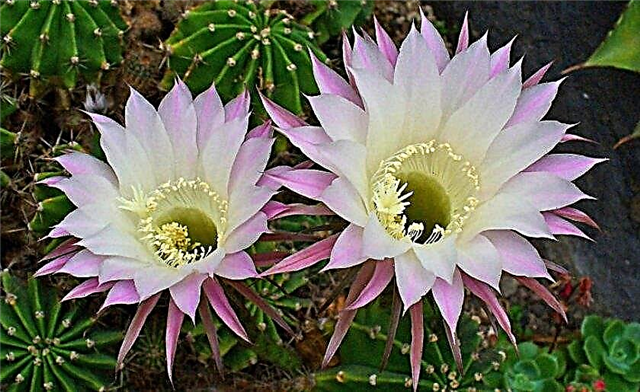
- Edged. It has a spherical or elongated stem shape with 8–14 pointed ribs. Short spines are located in large areoles, pubescent with white villi. The central spines are 1–5 pieces, and the radial spines are 3–15 pieces (2.5 cm). Flowers of pink tones of various density up to 20 cm long and up to 14 cm in diameter.

- Golden. A spherical-type stalk with pronounced ribs up to 10 cm high. A single central spine (up to 3 cm) is surrounded by 8-10 radial up to 1 cm long. The flowers of yellow tones grow in length up to 10 cm and have a diameter of funnels up to 4 cm.
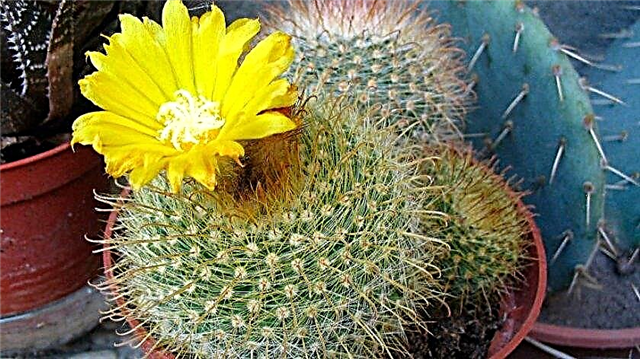
- Mamilose. A stalk with noticeable sharp ribs (13–17 pcs.), Grows no more than 30 cm, looks like a flattened ball. Yellowish-brown spines grow about 1 cm. Central spines (4 pcs.) Thicker than radial (up to 12 pcs.). It blooms in pink.
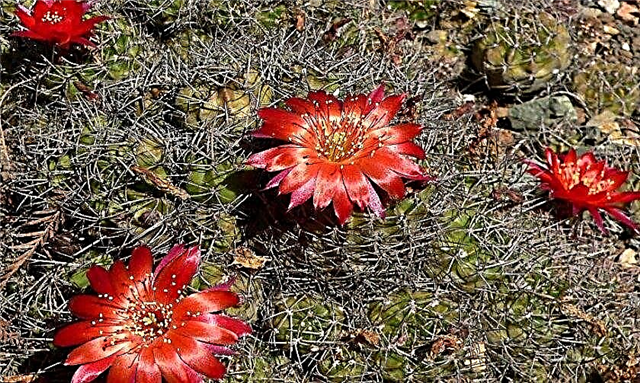
- Hook-nosed. Small cactus (up to 6 cm) with 20 ribs. It differs in the shape of needles bent into hooks. The central spine (1–4 pcs.) Grows up to 2 cm, and the radial (4–10 pcs.) Grows up to 1 cm. 4 varieties are distinguished, blooming in yellow, pink-red, red and colorful flowers in the daytime.
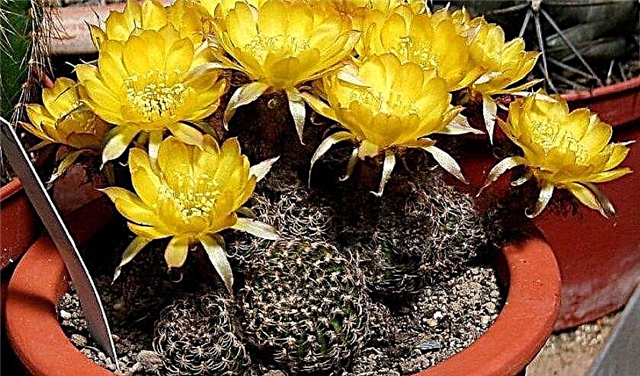
- White-flowered. The stalk with 14 ribs grows up to 40 cm in height and 12 cm in diameter. A single central spike 10 cm in size is framed by radial spikes 2.5 cm in size in brown tones. It blooms with lush multi-tiered white flowers.
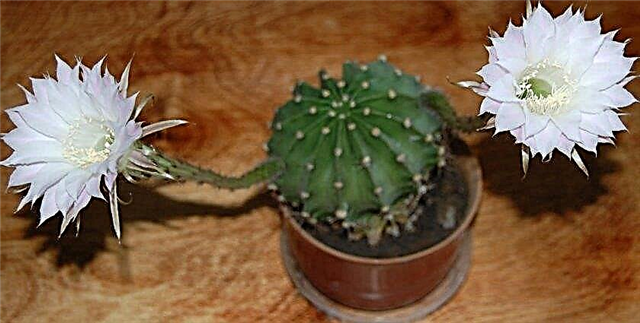
- Subdenudate (half-naked). It is distinguished by the absence of thorns; in small fluffy areoles, it is difficult to make out one thorn with a size of no more than 2 mm. A low stem (maximum 20 cm) has 12 ribs. Blooms in large white.
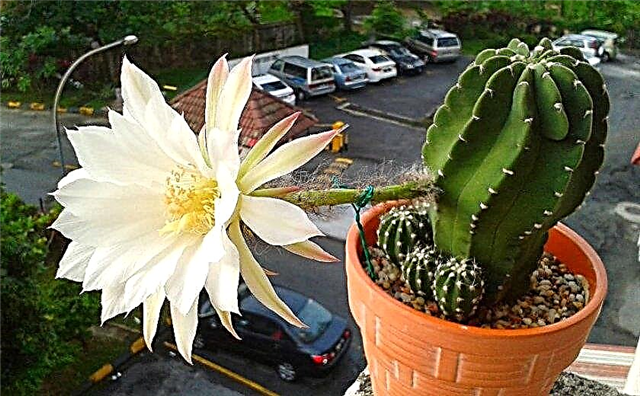
- Chamerceus. Branches at the base of the stems, which are stretched so that they hang down from the tank. Blossoms in bright orange. Resistant to low temperatures.
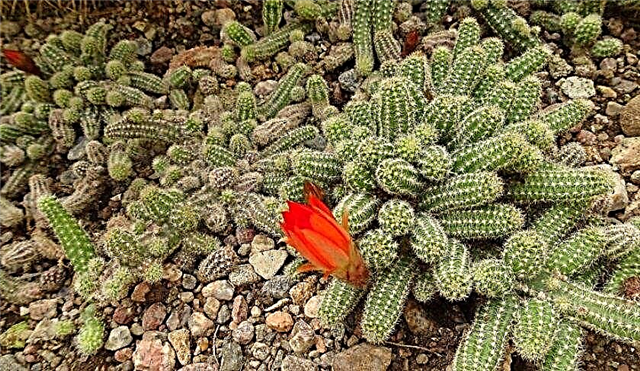
- Huasha. It grows to 50–90 cm. The central spine is 2 cm more than the lateral (4 cm long). Blooms in the daytime with flowers up to 10 cm saturated red or yellow.
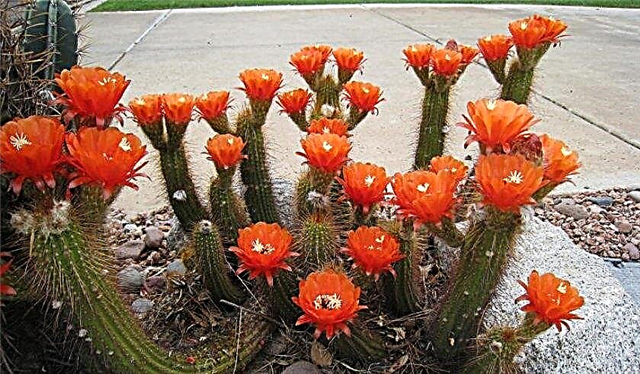
House growing conditions
These cacti are unpretentious, but in order for the plant to bloom, it is necessary to create conditions.
Lighting
The plant loves sunlight and normally tolerates even direct sunlight. Some recommend a little shade of the plant from the hot sun. If there are only northern windows, echinopsis will not bloom due to a lack of light, and it will be necessary to provide illumination with phytolamps. The plant needs a long daylight hours (12-18 hours, depending on the season).
Important! During the growing season, it is not recommended to change the location of echinopsis. In winter, you can move it to a cooler place.
Ventilation
It is important when ventilating to protect echinopsis from a draft, especially in winter.
Temperature mode
In summer, echinopsis develops at + 22 ... + 27 ° C, and in winter at + 6 ... + 12 ° C. If the plant does not organize a dormant period with lowering temperatures to +10 ° C, it will not bloom. Lowering and increasing temperatures should be gradual, since cacti are harmful to temperature changes.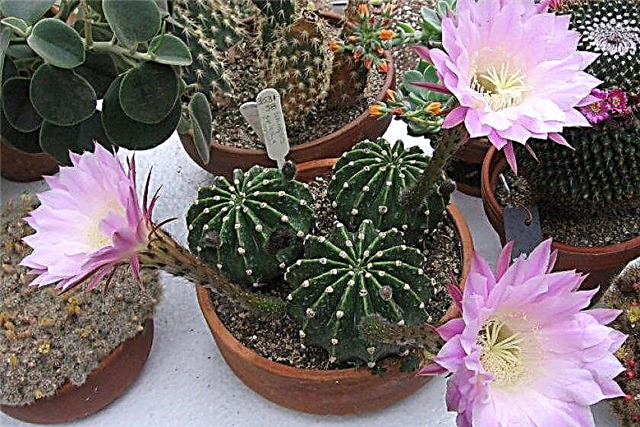
Air humidity
Echinopsis tolerate dry air. It is not necessary to artificially moisten the environment, but sometimes in a warm period it is recommended to arrange a warm shower, avoiding moisture in the ground.
How to care at home?
Caring for echinopsis is simple, like most cacti.
Watering
After a period of rest, echinopsis passes to the stage of active life processes (March-October) and needs watering, which is carried out when the soil in the pot dries by 50%. Watering is rare and not too plentiful.
Important! All cacti do not tolerate waterlogging. This can lead to the appearance of rot, as well as the death of the plant.
Water is used soft, settled and room temperature (+20 ... + 24 ° C). During dormancy, in winter, plants are rarely watered (1-2 times per month).
Top dressing
During the period of active development, echinopsis must be fed. To do this, it is enough to fertilize the soil with complexes for cacti and succulents once every 30 days. Any top dressing should contain little nitrogen compounds. The required proportions of nitrogen, phosphorus and potassium are 9:18:24, respectively.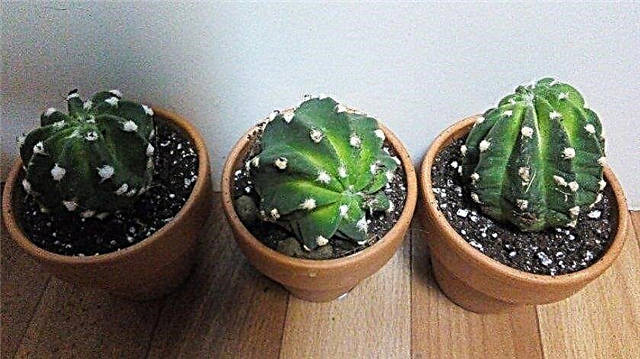 The content in the fertilizer of iron, manganese, calcium, sulfur, magnesium and zinc will be useful. In cold time (rest period) top dressing is stopped completely.
The content in the fertilizer of iron, manganese, calcium, sulfur, magnesium and zinc will be useful. In cold time (rest period) top dressing is stopped completely.
Transfer
Echinopsis is transplanted as it grows once every 2-3 years. The procedure is carried out at the beginning of the spring period. For this, a shallow but wide pot for planting is acquired, since the roots of the plant develop on the surface. Replace the pot only if the flower has completely filled the container. The new pot should have holes to drain excess fluid.
At the bottom it is necessary to place a drainage layer (gravel, crumb brick). Cacti need loose soil so that water and air penetrate well. You can buy ready-made soil for cacti, or you can cook it yourself.
To prepare the soil mixture for planting you will need:
- turf land - 2 parts;
- sheet land - 1 part;
- sand of large fractions - 1 part;
- fine gravel - 0.5 parts.
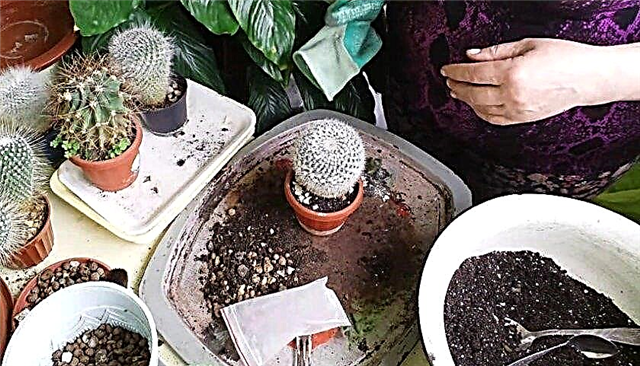
The transplant process is as follows:
- Echinopsis is watered before the procedure, so that it is easier to remove it.
- Holding the cactus, the pot is turned over and knocked on the bottom. Carefully take out the plant. Carefully inspect the root system, clean from the soil, cut off too long roots. The roots are treated with crushed activated carbon.
- Place the cactus in an empty container for two days so that the wounds on the roots heal after pruning. Drainage and soil are poured into the selected pot (up to half).
- Place the cactus in the center of the pot, carefully aligning the roots.
- The tank is filled with the remaining soil, slightly tamping.
Important! Removing a plant from an old pot, you can not pull on the stem, so as not to damage the echinopsis. In order not to trample your fingers on the thorns, it is recommended that the stem be wrapped in paper in several layers and put on tight gloves.
After transplanting, the plant is not watered for about a week, so that the root system does not begin to rot due to possible damage.
Video: Echinopsis cactus care and transplant
How to breed at home?
Echinopsis is propagated in two ways - seeds and "children."
"Kids"
The easiest and most common way. From the adult and healthy echinopsis, the "children" are carefully separated. They are dried for two days, and then planted in pre-moistened sand. The process is carried out in the spring. After 7-14 days, the “children” have roots, and they can be transplanted to a permanent place. If the planting specimen is old, it can be rejuvenated.
To carry out the update, you need to carefully remove the top of the stem with a sharp knife. Within 10 days, it is dried and planted in moist sand. In the remaining hemp after the cut, young shoots grow over time. Soil for planting can be purchased at the store or prepared independently. To do this, mix 1 part of sand and sheet soil, 1.2 parts of charcoal.
Video: how to drop off Echinopsis babies
Seeds
Seed is sown in prepared soil in spring. Previously, the seeds are placed for several hours in warm water. Then the container with the landing is covered with plastic wrap. Every day open for 10-15 minutes for ventilation. The soil is moistened as necessary. The temperature regime is maintained at the level of +18 ... + 22 ° С. After 14-21 days, sprouts appear, which are then transplanted into separate pots.
Possible growing difficulties
Echinopsis is resistant to diseases and pests. But with violations in care, they can get sick, pests can also appear.
Did you know? Sanitized cactus needles in the past in Latin America have been used by doctors to suture wounds.
Drafts, waterlogging, cold air temperature - all this can cause the following diseases:
- Black rot. Dark black-brown spots appear on the plant. To fight, all spots are carefully cut out, and the places of the slices are sprinkled with sulfur. Spray with Hom, Fundazolom, Oksihom.
- Dry rot. A sign of appearance is the drying and withering of the cactus. The disease is better to prevent, since it is impossible to cure. For this, treatment with a systemic fungicide (Fundazole) is carried out approximately once every several months.
- Spotting. It happens in the form of rust spots and stains. It may be due to sunburn due to direct sunlight on the cactus, as well as cold water. In order to prevent the disease from spreading, the cactus is sprayed with fungicides (the systemic preparation "Topaz").
- Anthrocnosis (brown spotting). It is detected in the form of spots from light to dark color. The spot area is dry and depressed. To combat, carefully cut the affected areas and sprinkle with activated carbon powder. Then apply fungicides ("Fundazol", "Maxim").
- Brown rot. When it appears, the stem darkens, and the cactus becomes soft to the touch. It is not treatable; it is better to dispose of the affected specimen.
- Yellowing. The reason may be a lack of nutrients in the soil. Apply mineral fertilizers.
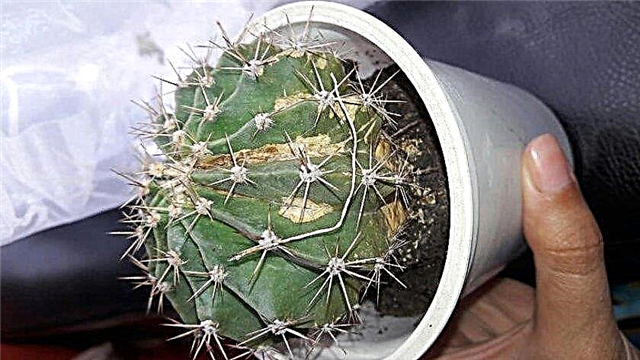
Echinopsis is susceptible to attacks by the following pests:
- Spider mite. It is detected by brown spots and the appearance of the finest web. The stem is cleaned and sprayed with chemicals ("Aktara", "Actellik", "Fitoverm").
- Mealybug. Insect about 5 mm. It is detected in the form of a white cotton-like coating, which is cleaned with a sponge dipped in soapy water. Then apply chemical agents ("Aktara", "Aktofit").
- Cactus nematodes. Small worms about 1 mm. Infection occurs through the soil or from other diseased plants. Nematodes primarily affect the roots. Signs of appearance - growth slows down, and the stem withers. To fight, the plant is heated to +52 ... + 55 ° C for 15-18 minutes. Then the affected roots are removed, the cactus is dried for 3 days, and then transplanted into new soil and temporarily quarantined, away from other indoor flowers.
Did you know? Some types of echinopsis are powerful hallucinogens. For example, Echinopsis pachano, called the San Pedro Cactus, has been used in folk medicine and shamanistic rites of Latin American Indians for 3 thousand years.
For lovers of flowering cacti, echinopsis is an excellent choice. He is beautiful, especially during flowering, and unpretentious.










